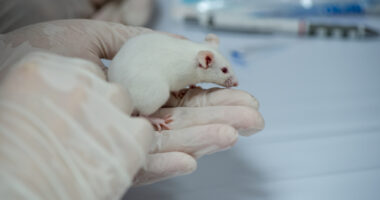Punctal Plugs Relieve Dry Eye Symptoms With and Without Inflammation

Punctal plugs, which are inserted into the tear ducts to keep the eyes lubricated, are a mainstay of treatment for dry eye in people with primary Sjögren’s syndrome, a South Korean study found.
The approach may be combined with additional treatments, but appropriate therapies will depend on the presence or absence of inflammation in the eye surface.
The study, “Comparison of Treatment Modalities for Dry Eye in Primary Sjögren’s Syndrome,” was published in the Journal of Clinical Medicine.
A hallmark symptom of Sjögren’s syndrome is dryness of the eyes, which can cause complications such as infection around the eye and damage to the cornea, the transparent layer covering the front of the eye.
There are several treatments designed to relieve dryness and prevent its complications in people with Sjögren’s syndrome. As each treatment has its own mechanism of action, patients are often treated with multiple compounds at the same time in clinical practice.
However, current guidelines for the management of dry eye disease in Sjögren’s patients are based on the effects of each therapy alone, and not their combinations.
To find out how different treatments work in combination, a team of researchers in Korea investigated how newly diagnosed Sjögren’s patients were treated at the Severance Hospital in South Korea between January 2005 and December 2020.
The study included 199 patients, with a mean age of 52.3. Most (95%) were women, and the mean follow-up duration was 5.4 years. About 17.8% of patients had inflammation in the eye surface.
The primary goal was to measure how each treatment affected patients’ corneal staining scores, which assess areas (dots) of corneal damage. A secondary outcome was changes in dry eye symptoms, assessed with the Sjögren’s International Collaborative Clinical Alliance (SICCA) scores.
At the start of the study, 20.1% of the eyes had grade 1 corneal staining, meaning one to five dots of damage; 46% had grade 2 (six to 30 dots); and 33.9% had grade 3 (more than 30 dots).
Initial analyses demonstrated that the presence of eye inflammation and more corneal damage at the beginning were both associated with a significantly smaller improvement in eye damage over time. Thus, these two factors were taken into account for further analyses.
Results showed that punctal plug insertion in either the lower or upper eyelids was significantly effective at lowering corneal damage scores and at improving dry eye symptoms. A punctal plug is a tiny device that is inserted in the openings that normally drain the tears from the eyes, helping keep the eye’s surface moist.
Other approaches, such as carbomer gel, lanolin ointment, diquafosol, and steroid eye drops also were significantly associated with an improvement in corneal staining scores. Improvements in SICCA scores, however, were only significant with lanolin lubricating ointment, diquafosol, and steroid eye drops.
Carbomer gel produces a fine transparent film that helps keep the eye moist, diquafosol increases tear production and the secretion of a protein called mucin that helps make mucus, and lanolin ointment is used as an eye lubricant.
While punctal plugs work well in people with and without ocular inflammation, the other treatments might need to be adjusted dependent on its presence.
In fact, while steroid eye drops, namely those containing 1% prednisolone, were more effective for people with ocular inflammation, carbomer gel, lanolin ointment, and diquafosol were most effective for people without such inflammation.
The team also examined how patients managed their dry eyes in the long term. Overall, four out of five (80%) used punctal plug as a long-term maintenance treatment; tear substitutes (in gel or ointment form) were used by 21%. Oral pilocarpine was used by 14% of patients and oral steroids by 6%.
“Punctal plug insertion … is the mainstay of the treatment for dry eye in primary Sjögren’s syndrome even in the presence of ocular surface inflammation,” the researchers concluded.
“Short-term use of steroid eye drops can be considered in the presence of inflammation, and a topical mucin secretagogue [such as diquafosol] can be helpful in the absence of inflammation,” they added.






